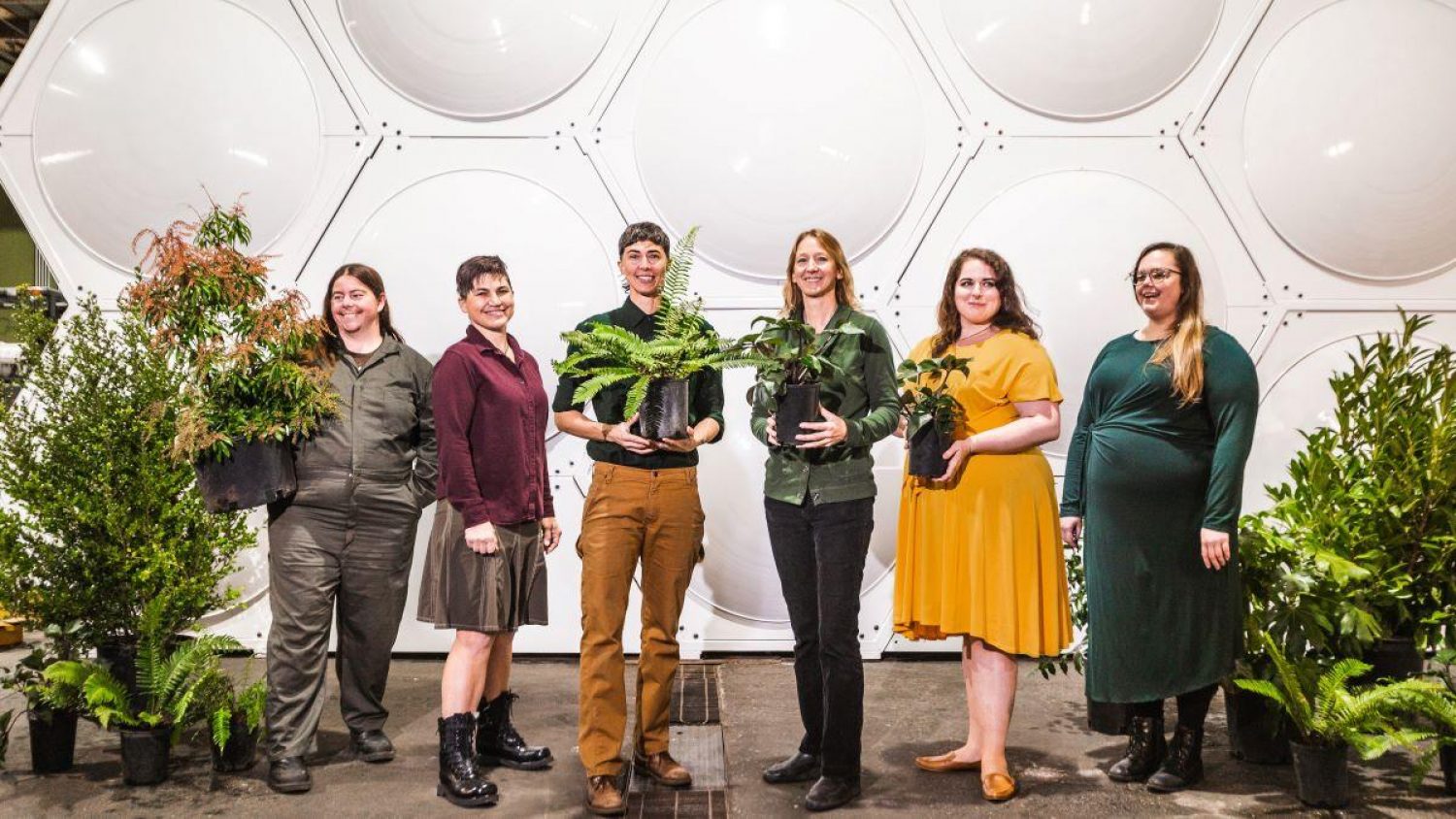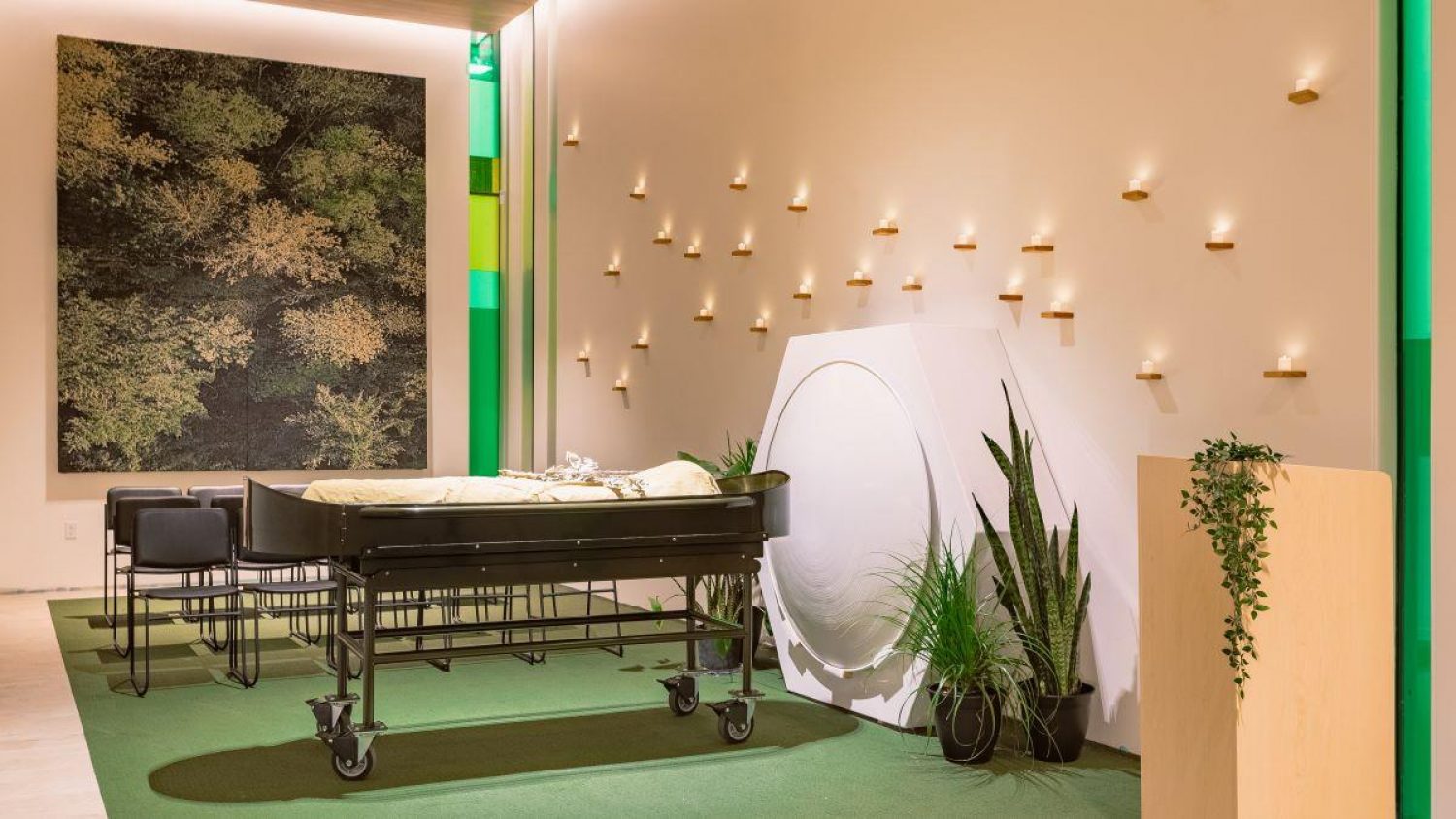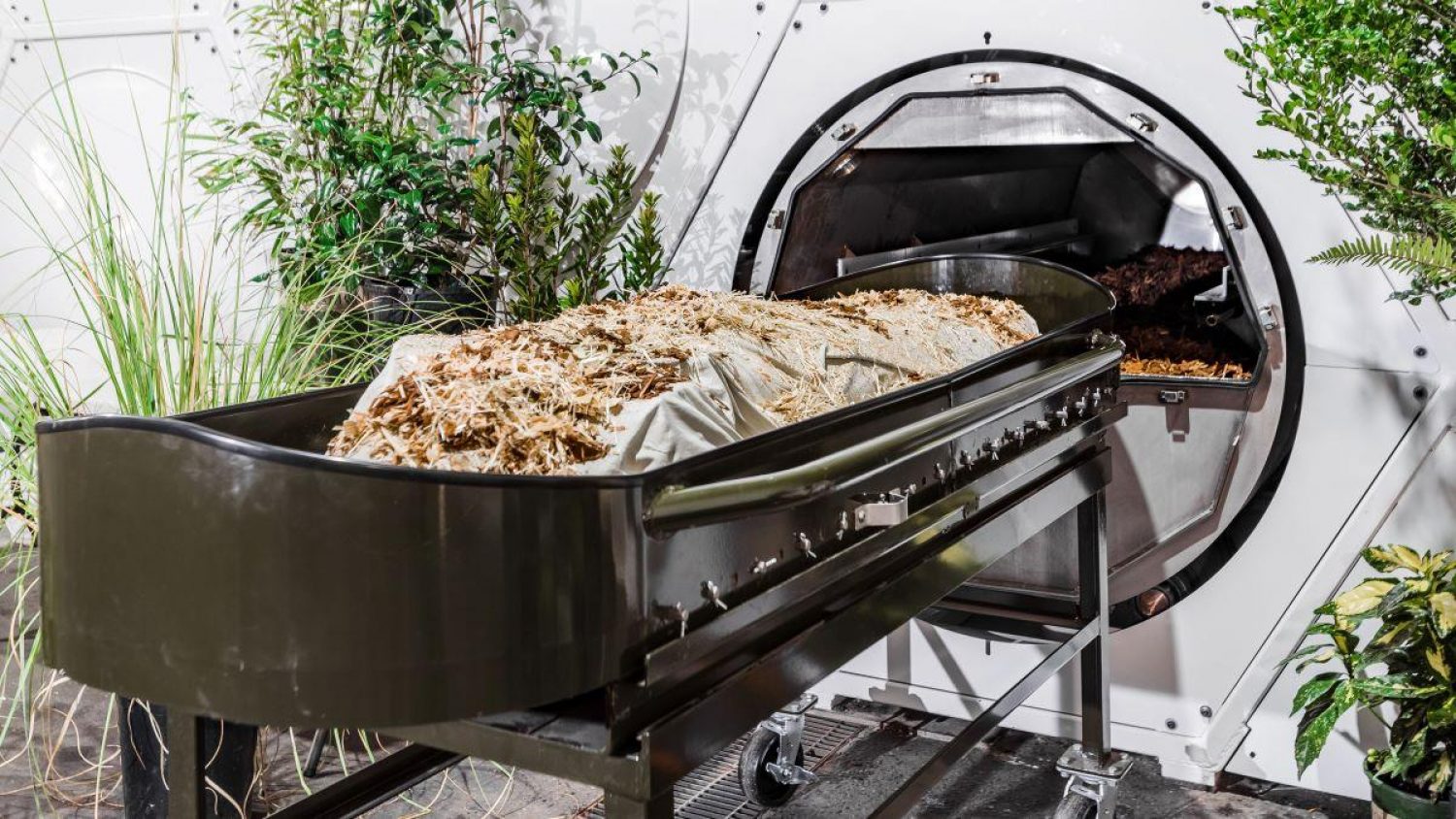Five minute read
Watch Poppy's CEO, Clare Montagu, explain human composting on TalkTV
In 2020, we interviewed American innovator Katrina Spade, founder of Recompose. She told us about her vision for human composting — also known as natural organic reduction — the ethos behind it and her plans to open her first facility in Seattle.
In 2023, we checked back in with Recompose’s Service Manager, Morgan Yarborough (pictured above, second right), to see how this vision has become a reality.
Morgan used to arrange burials and cremations as a conventional funeral director. When she joined the Recompose team, she became the first funeral director to put a body in the vessel for human composting. She’s well-placed to explain what it is that makes Recompose different.
Let’s start at the beginning. What happens when someone first gets in touch with Recompose?
Like any other funeral home, if someone calls to report a death, we send a transport team to bring the person back. We reach out the next day to talk about next steps and to plan a ceremony if that is what the family wants.
In a Recompose ceremony, the person who has died is shrouded on a cradle in our gathering room (see the picture below). Family and friends cluster around them and can participate in laying plant materials down on their person if they wish. It’s really hands-on.
We have had over 200 clients since we’ve opened — all sorts of people. All backgrounds, all ages, from all over the country. Anyone from a hermit naturalist, to a rancher who wants the simplest way to go back to his land, to activists, artists, scientists, and engineers.
What does the composting process involve and how long does it take?
The composting itself happens at the back of our facility. The team prepares an individual vessel for each person with a bed of woodchip, alfalfa and straw — natural materials which help with decomposition.
The cradle with the person on it goes inside that vessel. The cradle is then removed, so the person is lying on the plant material. Next we blanket them with the same material, cocooning the person, and the door closes.
For the next 7-10 days, the body rests. This allows the body’s microbes to do their thing. After the first week, you have to rotate the body to keep that activity going.
The person is in there for 30-45 days. Body composition and size influences how long it takes, but there are a lot of variables, even the atmosphere outside can affect it.
I think it’s cool that the process is unique for everybody. During this time, everything breaks down, except for some bone fragments and inorganic materials, like hip or knee replacements.
Next, our team removes any inorganics from the soil. They mechanically process the remaining bone fragments, much like a crematorium would, and these are returned to the soil.
The soil goes into a large curing bin for another 3-4 weeks. According to state requirements, we test the soil for heavy metals and pathogens.
What do people choose to do with the soil produced by human composting?
There is a lot of soil — a whole cubic yard for each person. The bulk comes from the plant materials used in the process. It’s enough to fill a pick-up truck.
Those who can’t take it all home will donate it to our forest conservation project. This year alone, it’s been used to plant over 10,000 saplings.
It’s a beautiful place — 700 acres of land that’s protected in perpetuity. The land was rescued by a non-profit. The people who owned it before were going to clear it to build a gated community of luxury condos.
You can also use the soil in your garden. Often people plant roses, or other flowers that their person loved. It restores topsoil and is healing for the land.
My favourite moment is seeing when someone puts their hands into their person’s soil and watching the emotions that go through them. I’ve never experienced anything like it as a funeral director.
This process takes so much longer than cremation or burial. How does that affect your relationship with your clients?
For people who have had prior experience with other funeral homes and are used to the quickness of the process, this is a really different experience.
We check in with the family throughout the time that their person is in the vessel and send them any updates. Families have time to work through their grief while the process is going on. It seems to be helpful.
We offer a lot of reassurance — people worry that it’s taking too long. It can be difficult in terms of planning a memorial service, but it’s a lesson we learn from nature — you can’t fully control the process. We comfort them through that, and remind them that the timing is unique to their person.
What are the environmental benefits of natural organic reduction, compared to natural burial?
People who learn about our process will ask, ‘This sounds a bit more complicated than natural burial, which is also good for the environment, why is your option better?’
Better is a relative term. The land use for burial is the main difference. Land is a limited resource. While conservation cemeteries do protect the land, you still have to disturb it — space will still run out one day, Recompose offers something that doesn’t require large-scale land use. It is designed to heal the soil and put nutrients back into the land.
Natural burial can do that too to a certain extent, but when the body breaks down at that depth, the rush of nutrients coming in can harm plants around it. With Recompose, you can do a more controlled application.
What does the future hold for Recompose? Are you planning to expand to new states as human composting becomes legal in other areas?
After Washington, Oregon and Colorado came first, then Vermont and recently California has legalised it. Just this month, a Bill passed in New York — that’s really big because it reaches the east coast population.
We have a facility that we’ve identified in Colorado that we’re going to move forward with, probably next year. We are looking at expansion, but also how to improve what we’re doing in Seattle. We’ve only been in the Seattle facility since this summer, so it’s still very new.
What do you enjoy most about this work?
Helping build something from the ground up, something that I know makes a real difference, was incredible. I love connecting with people and seeing how the ceremony I created resonates with them and connects them back to what we do and what the planet does. It’s been a wild two years at Recompose — but I love it.
Find out about water cremation, natural burial and other options for a more eco-friendly funeral.
To stay in touch with all the latest news and updates from Poppy's by email, sign up here or contact us if you need help planning a funeral.
(Image credits: Recompose)


